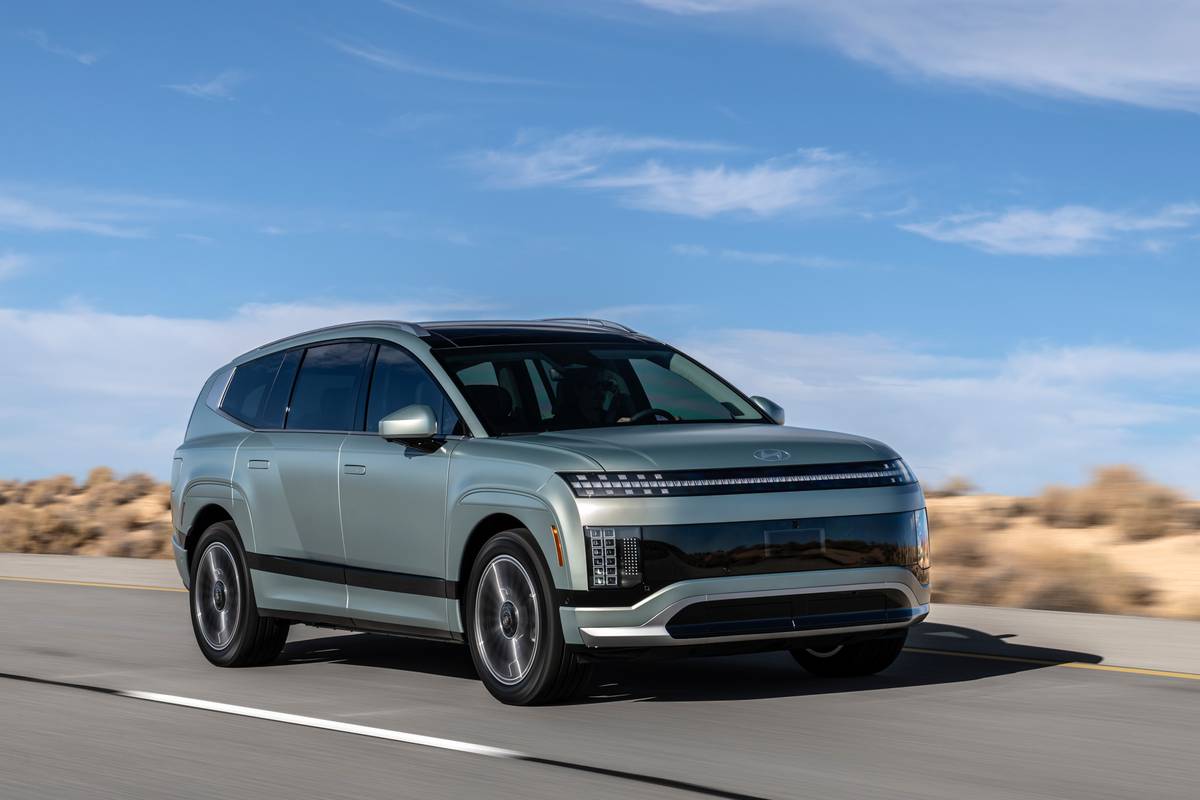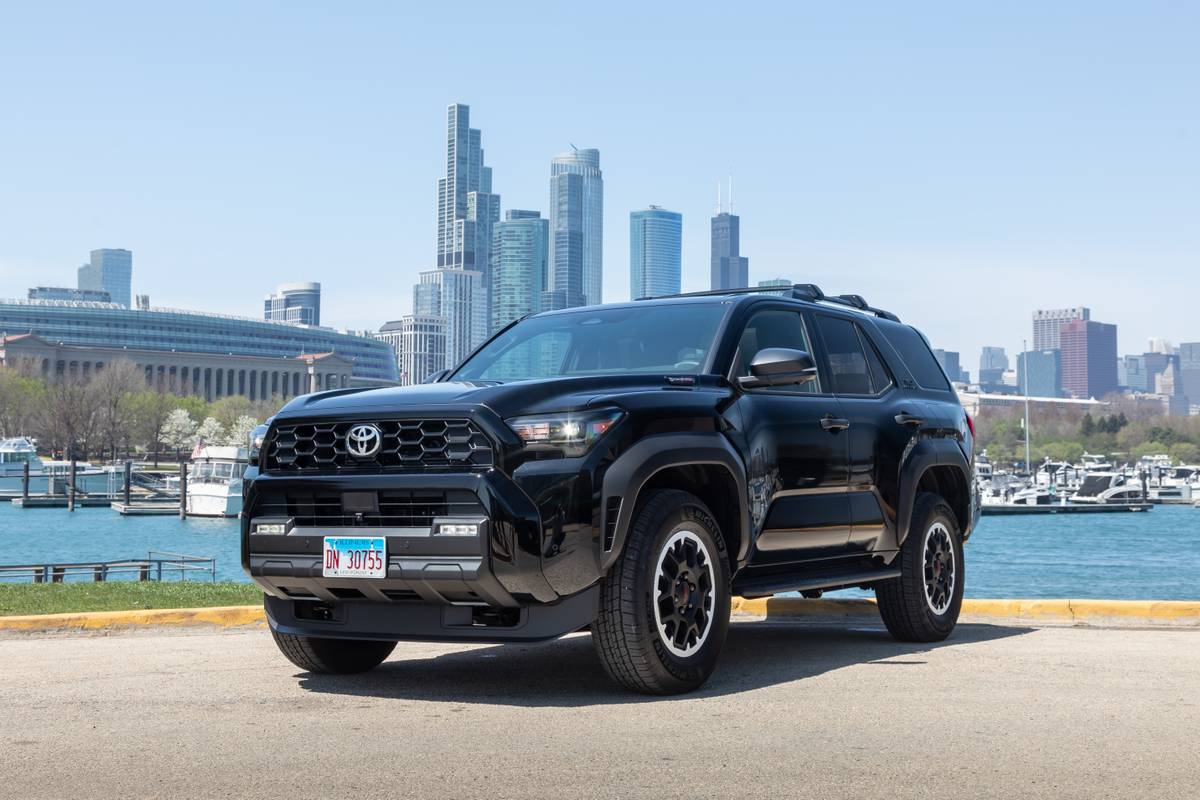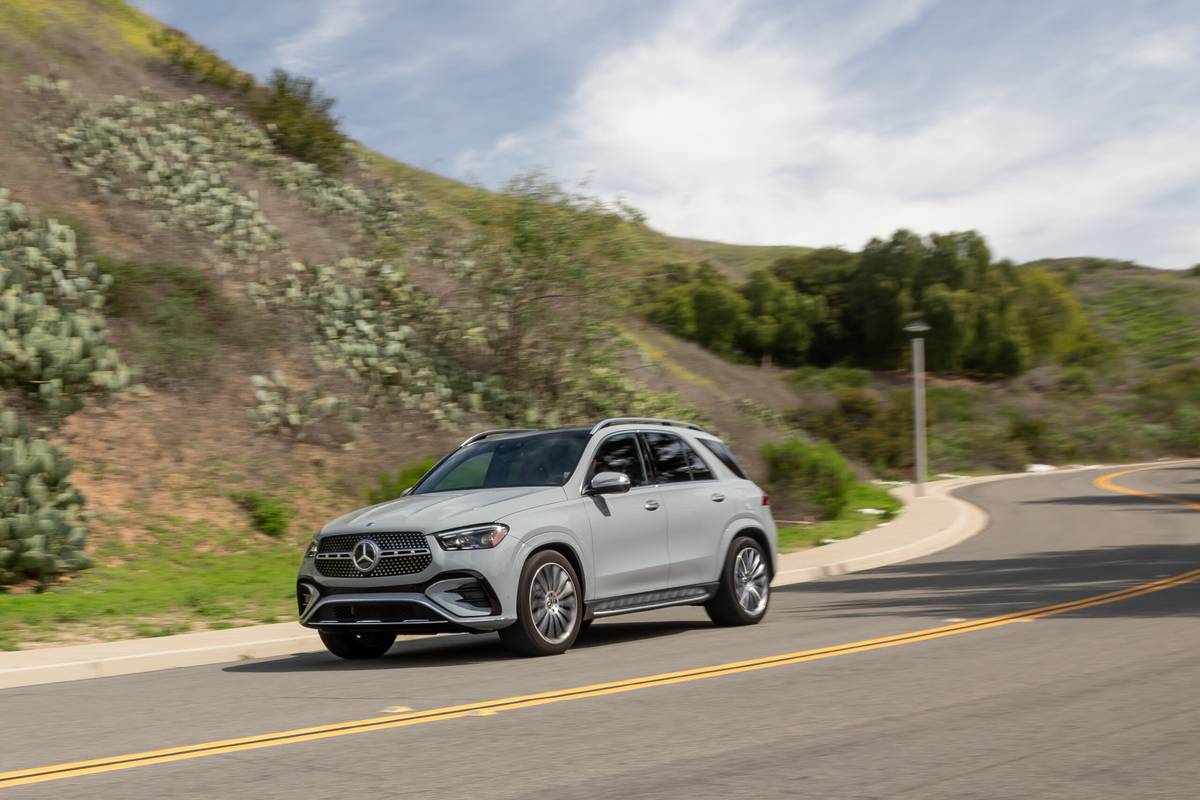chicagotribune.com's view
Toyota maintains the only reason it built a plant in Texas to produce full-size Tundra pickups was to give it a meager 200,000 units to sell annually to those who own Toyota cars and need a truck or who own a Toyota truck and need a bigger one.
It has nothing to do with capturing the market now dominated by Ford, Chevy and Dodge or with plans to assume auto sales leadership on this planet.
If memory serves, Toyota began building the midsize Camry in the U.S. only to give Corolla owners something bigger to move into. It had no intention of unseating the Ford Taurus as the top-selling car in the U.S.
But when Camry sales topped 400,000 units and Taurus got dumped from the lineup, Toyota said whoopee, not oopsie.
Toyota built the plant here so neither import nor domestic enthusiasts would have to buy Ford, Chevy or Dodge trucks. And the 200,000 sales target is twice the number of big pickups Toyota said it hoped to sell here when the original Tundra bowed in the 2000 model year.
The 2007 Tundra that went on sale in February is the automaker’s third attempt to play with the domestic big boys. First was the 1993 T100, which was midsize and too small. Second was the first-generation Tundra, which could best be called a midsize plus or a full-size minus. Too small and too underpowered. The 2007 is the 10-inch longer, 5-inch wider and 5-inch taller Tundra assembled in the same state as the Chevy Silverado.
Third time was the charm — for getting the size right. Tundra is offered in regular, Double- and Crew-Cab versions with a choice of small to long beds; DX, SR5 or Limited trim; two- or four-wheel-drive; and three engines. There are 31 combinations, great for the finicky consumer, a bit of a pain for dealers trying to stock just the right ones.
We tested the XL four-door, 4WD Double Cab SR5. Don’t confuse it with the XXL four-door Crew Cab, whose doors and cabin are about a foot longer.
Even with only one X, size is impressive — until you approach the first sharp corner or turn at speed and have to ease off the pedal. With the added size and weight (about 600 pounds), Tundra lumbers along the road. It feels a tad top-heavy at times — like whenever not moving in a straight line.
And, while those in small cars complain when trying to back out of a parking space with a full-size pickup parked alongside, those in a Tundra have to attempt slipping into a parking space when any vehicle is parked on either side. Not quick and easy to do when maneuvering a land yacht.
It helps that there’s a small screen above the rearview mirror so the backup camera in the rear bumper can show you any person or thing in your path.
The previous Tundra offered a 4-liter, 236-horsepower V-6 or 4.7-liter, 271-h.p. V-8 with 5-speed automatic, anemic choices for hauling or towing. Those engines stay, but a 5.7-liter, 381-h.p. V-8 with a 6-speed automatic has been added. You now enjoy dynamite off-the-line acceleration and the muscle to haul and tow — up to 10,800 pounds. That’s 700 pounds more than a Chevy can tow, and 1,000 more than a Dodge.
However, with 4WD the mileage rating is 14 m.p.g. city/18 m.p.g. highway (16/20 with 2WD). At $3 per, filing the 26-gallon tank will run $78.
No higher-mileage diesel is offered, though it says one is under study.
While handling suffers from the size and weight, ride is rather forgiving. Suspension has ample play to minimize harshness over uneven pavement and prevent bouncing your melon off the ceiling when off-road. Large four-wheel disc brakes quickly keep the size and weight under control. There’s four-wheel anti-lock brakes as well as stability control to help in corners and turns, and traction control to keep from slipping when leaving the light on wet surfaces.
The 4WD is one of those easy-to-engage dials with 2WD, 4WD and 4WD low settings for off-roading. Like every dial, knob, lever or button, it’s oversized and easy to use while wearing work gloves. When coming up with the new Tundra, Toyota asked truck owners what they wanted, rather than ask those with marketing or psychology degrees what they thought.
With that in mind, Toyota came up with a tailgate that lowers in slow motion rather than dropping guillotine style; top and bottom glove boxes to store more stuff; a center console big enough to hold a laptop as well as file folders (and/or purse); and three places in the console and dash for cell phones for those who use the truck as an office as well as transportation.
Other nice touches include a rear-bumper step to help get into the bed; rear seat bottoms that lift and stow against the seat backs to create cargo space on the cabin floor; power plug on the back of the center console for the rear seat; sliding rear window; side windows that motor fully into the doors; huge outside mirrors that provide great visibility; single bottle holders in the rear doors; dual bottle holders in the front doors; covered map holder in the center console; pen/tissue/credit card/map holders in the bottom of the center console armrest; iPod holders in the console and dash; side-curtain air bags front and rear; and cargo box light for loading/unloading at night.
But other than the slo-mo tailgate and back-up camera and screen, nothing’s terribly unusual or novel. Hummer has the camera with a screen that pulls out from the mirror, but no full-size Chevy, GMC, Ford or Dodge truck offers it. The tailgate at Chevy and GMC lowers more slowly than usual but not as slowly and safely as Tundra. This being its third attempt at a truck, Toyota has had ample time to adopt the best features of its rivals. Of course, it also had time to add a host of novelties — but didn’t.
If you’re shorter than 6 feet, better hand over $475 or $519 for black or chrome tube running boards to get in and out of the cabin. And, despite increased dimensions, rear-seat knee room is at a premium. And, with a step in back of the bed, why not one along the side? And, if you take the $1,160 package with the upgraded JBL AM/FM audio system with six-disc CD changer, some of the hardware is under the rear seat so you don’t get all the added cargo capacity along the floor.
The 4×4 SR5 tested starts at $31,160. Two options missing were a sunroof ($810) and a DVD entertainment system ($1,670 only on the Crew Cab).
While the domestic automakers insist they don’t fear Tundra, they should, if for no other reason than Camry proved how Toyota starts small, but never stops growing.
And keep in mind the Texas plant was designed and dedicated to producing trucks and nothing but trucks, and the one thing Toyota has never done in this country is close a plant.
– – –
2007 Toyota Tundra Double Cab 4×4
$33,500
*Price as tested: $33,500; Add $645 for freight.
THE STICKER
$31,160 Base
$1,160 JBL AM/FM audio with six-disc CD changer, 10 speakers, Bluetooth, steering-wheel audio controls and auxiliary audio jack
$605 Power, cloth bucket seats, tilt/telescoping steering wheel, floor gearshift and center console box with storage for laptop, file folders and trip computer
$345 Sliding rear window with privacy glass
$100 Cold kit with heavy-duty battery and starter and windshield wiper de-icer
$60 Front and rear mudguards
$40 Daytime running lamps
$30 Power, heated outside mirrors
THE NUMBERS
Wheelbase: 145.7 inches
Length: 228.7 inches
Engine: 5.7-liter, 381-h.p. V-8
Transmission: 6-speed automatic
City: 14 M.P.G.
Highway: 18 M.P.G.
PLUSES
Bigger, more powerful and roomier than previous model.
Latest news


10 Biggest News Stories of the Month: Toyota 4Runner Eases on Up, Hyundai Tucson Takes Up Space

